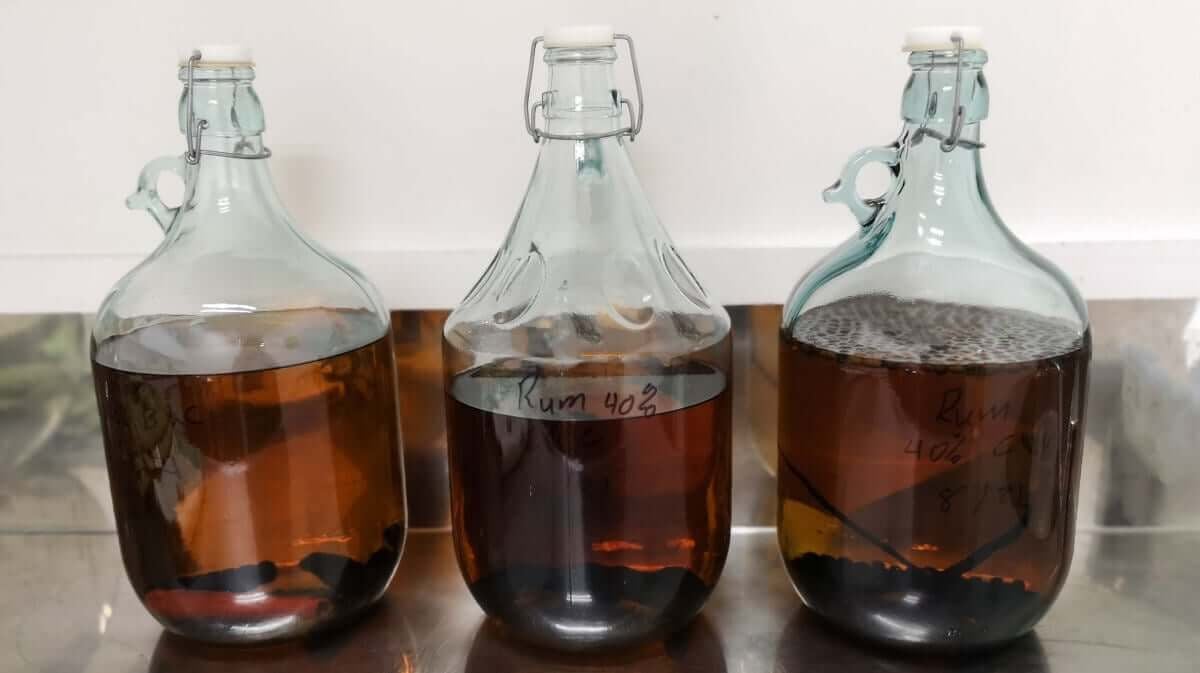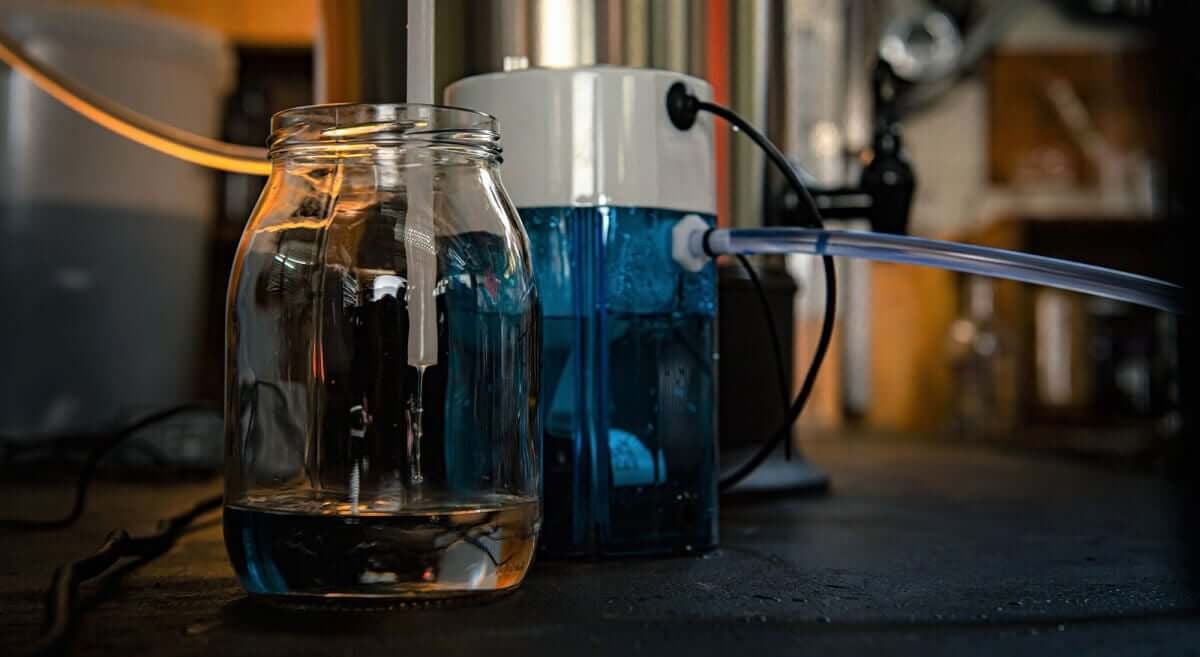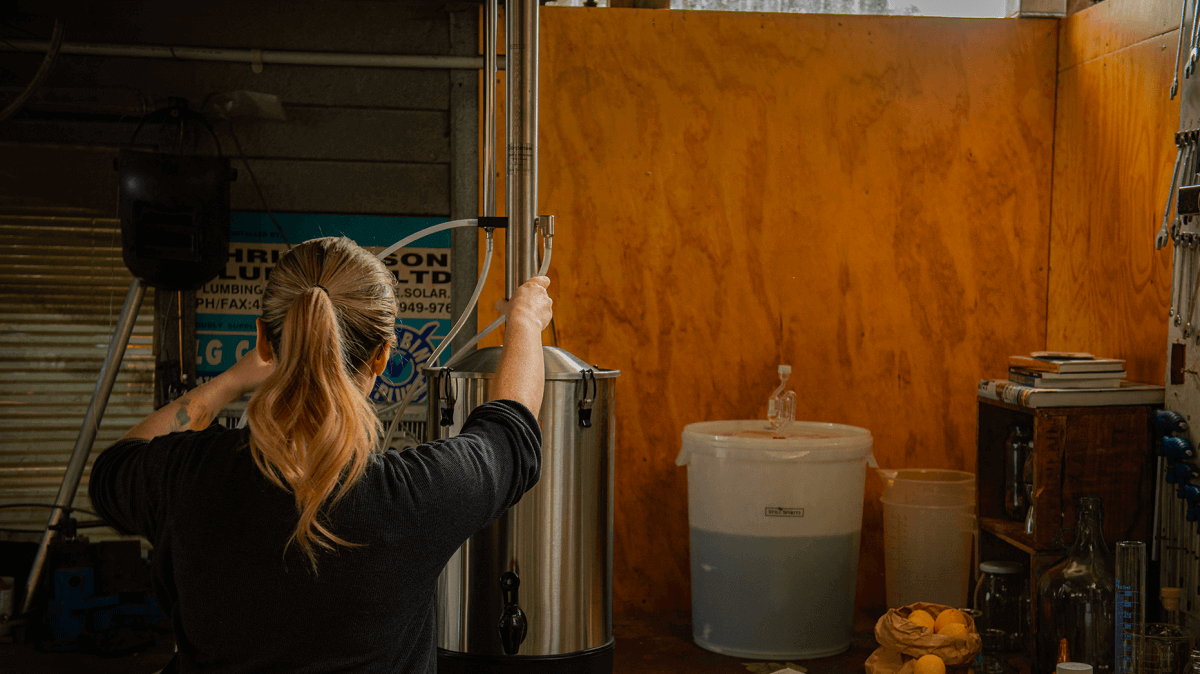When learning how to make rum, there are a few things to consider - sugar type, fermentation style, distillation, ageing techniques, and if opting for a spiced or flavoured style, post distillation flavouring.
Generally speaking, rum varieties can be divided into those produced with sugar cane juice, and those produced with molasses.
Sugar cane (‘Saccharum officinarum’) is a grass that grows in tropical regions. It can be found in the West Indies, Hawaii, Central and South America, Indonesia, Thailand, the Philippines, China, India, islands in the Indian Ocean, Australia, and in southern Spain.
Sugar cane juice is obtained by crushing sugar cane. The bases of the canes are ground into fibres and hot water is added to extract the sweet juice. The pressing process results in two products: cane juice ready for fermentation, and the bagasse - a fibrous residue that can be burnt as fuel. The juice is relatively low in sugar and has no natural preservation, thus it deteriorates very quickly. It, therefore, needs to be fermented as soon as possible and then distilled to produce agricultural rum.
Molasses is a thick, residual syrup that is a by-product of the refinement of cane sugar. It is commonly used as an ingredient in desserts and sweets, and in the production of a variety of rums. During the sugar-making process, the juice from the sugarcane is boiled until the sugar crystalises and separates from the liquid – this leftover liquid is molasses. This boiling process is usually completed three times and with each cycle, the leftover molasses contains less sugar, thus molasses can vary in colour and flavour depending on how many boiling cycles have been completed. As molasses is low in moisture and high in sugar it is much more stable than sugar cane juice, making it the preferred sugar source for rums outside of sugar cane producing areas.
Fermentation
There are a few types of fermentation processes typically used in the production of rum. They can be categorised as follows:
Yeast: Yeast is added to molasses/sugar cane juice diluted with water and then allowed to ferment. The sugars are converted into alcohol, carbon dioxide, and flavour compounds, producing a sugar cane “wine” of about 8-10% ABV.
Spontaneous fermentation: This relies on the yeasts and micro-organisms naturally present in the atmosphere, in the sugar cane juice or from the Dunder pit (Dunder is the liquid left in a boiler after distilling a batch of rum. It is a traditional flavour source used in the fermentation of the wash of Jamaican rum. Is often left in a pit at the distillery). Most fermentations take place in open vats and take 1-2 weeks. Small distilleries, especially those in Haiti, still practice spontaneous fermentation.
Controlled fermentation (continuous): This is a growing trend in the rum industry. It involves keeping a fermentation vat permanently filled, with the continuous addition of more molasses. This enables the yeasts to be kept active by removing a quantity of the cane wine, whose sugars have already been digested by the yeasts, from different sections of the vat.
Distillation
As with most spirits where the flavour of the wash (cane wine) is desirable in the final spirit, a pot sill is often used (these may be alembic or column stills). Reflux stills are not often used as too much of the flavour is stripped from the spirit. Larger scale distilleries tend to favour continuous distillation, but many small distilleries will follow the same steps as the home distiller. The first step is to perform a stripping run in which as much alcohol is collected from the wash as possible. This stripping run spirit is then diluted and run through the still again in a spirit run where there is controlled collection and blending of the heads, hearts and tails.
Ageing
Once distilled, you'll make a light colourless rum that can be left as a white rum or made into dark rum or spiced rum if you wish.
White rum does not undergo any ageing process, however, once distilled and diluted to 40% ABV (80 proof), it is best to leave it for a few days minimum so the flavours can stabilise. Dark rum is aged in oak barrels or on oak chips/spirals to provide a richer flavour. The oak also contributes to the colour of the final spirit.
Since there are no legal regulations, the ageing process and associated designations vary from one producer to another. While most ageing takes place in old bourbon barrels, rum can also be aged in cognac barrels and new oak barrels. Special cask-finished rums are quite rare; these are usually produced by Italian and French merchants, who use Banyuls, port, sherry, and Madeira barrels to impart flavour to the rum.
There is no required minimum ageing period - only a few rums are aged for more than 8 or 12 years. This is most likely due to the high amount of spirit lost each year due to the “Angels Share” that eats into the profit from each barrel. For the home distiller that will often use chips, cubes, spirals or staves in a sealed vessel this is much less of an issue. Also due to the high wood surface area for spirit contact, the ageing process is much faster - what takes years for commercial distilleries can often be achieved in as little as months for the home distiller.
How to Make Rum - making the wash
Now for the fun part! We made a 60 L wash so we could fill 3 x 5 L demijohns with rum to experiment with some flavour combinations.
Rum Wash Recipe:
- 14 kg Blackstrap Molasses
- 7 kg Brown Sugar
- 5 capfuls Still Spirits Dark Spirits Nutrient
- 2 packs Still Spirits Distiller’s Rum Yeast
- 2 packs Mangrove Jack’s Bavarian Wheat Yeast**
** Why the Bavarian Wheat yeast, you ask? Bavarian Wheat yeast increases the production of banana, apricot and clove characters during fermentation, and we wanted to boost the esters produced by the rum yeast even further.
- Half fill your cleaned and sanitised fermenter (70 L capacity) with water at approximately 50°C (104°F), then add in the blackstrap molasses and sugar while stirring vigorously to dissolve. (Note that the wash will become very viscous, so if it becomes too difficult to stir you should add more hot water, providing the total volume does not exceed 60 L).
- Once the molasses is fully dissolved, top up the solution to a final volume of 60 L (if required), aiming for a liquid temperature of 30°C (86°F).
- Take your Distiller’s Nutrient and shake it well. Measure out the 6 capfuls and stir into the sugar mixture with a sanitised spoon, ensuring it is completely dissolved.
- Ensuring the temperature is below 30°C (86°F), take your Rum Distiller’s Yeast and Bavarian Wheat Yeast and add directly to the fermentation vessel, fit your lid and airlock (half filled with sterile/boiled water) and leave to ferment at 24°C (75.2°F) for 3 weeks.
- Leave your molasses wash to ferment at the appropriate temperature. Note that there may be some foaming at the liquid's surface – this is why a 70L capacity vessel is recommended for a 60 L volume.
- Once your airlock stops bubbling, check the specific gravity using a hydrometer and ensure this is stable for 2 days.
- Once fermentation is complete you should leave it to stand for 2-3 days to allow the yeast and any other solids to settle out to the bottom of the vessel. Still Spirits Turbo Clear can be used here to speed up the clarification process.
- Once the wash completed fermentation, we performed three stripping runs of 20 L of wash each, collecting a total of 15 L at 60%.
- We then diluted the distillate to 28 L at under 40% ABV and performed a spirit run, taking cuts and keeping 10 L of hearts at 60% ABV.
- The spirit was diluted to 50% ABV and split into the demijohns to be aged on charred oak spirals for 3 months.
- After the 3 months was completed, we diluted the spirit back down to 40% ABV.
Post Distillation Flavouring
We flavoured each demijohn differently and are leaving them to age further before tasting. Why not try these out for yourself, or experiment with your own flavour combinations?
Banana Cinnamon: One 50ml bottle of Still Spirits Banana Schnapps Flavouring and 1 cinnamon quill added to the spirit and allowed to age for 1 month.
Cacao Chilli: 100g of cacao nibs and 2x de-seeded habanero chillies added to the spirit and allowed to age for 1 month.
Vanilla Coffee: 2 vanilla beans (sliced in half lengthways) and 100g of whole coffee beans were steeped in the spirit for 3 weeks. We normally make this rum through a vapour infusion using a botanicals basket on the spirit run – see recipe here. But this time we tested the flavour contribution of the coffee beans through steeping.








